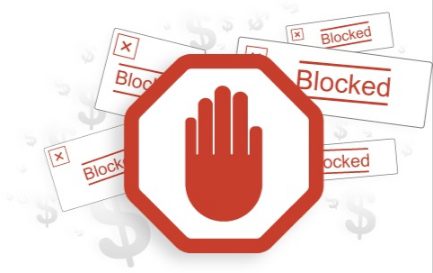Retail brands need to step up their search for additional ways to reach consumers online, as there is strong evidence that more shoppers have grown tired of seeing advertisements.
Ad blocking is becoming more commonplace among American web users, with almost 70 million people using ad blocking services in 2016, a 34.4% increase above last year’s totals. Various estimates show that these services can put a huge dent in potential revenue for businesses around the globe; companies publishing ads online stand to lose anywhere from $27 billion to $35 billion by 2020.
Whether through blocking pop-up ads with software, disabling cookies, opting out of emails or skipping pre-roll video ads, 66% of consumers take action to avoid seeing or receiving ads regularly, according to a survey from video content platform provider Rapt Media.
With such an aversion to digital advertising, consumers are now pushing brands to consider alternatives to their present marketing strategies.
Brands have traditionally circumvented shopper efforts with sponsored content or native ads, as these can blend in with the site without interrupting the browsing experiences. Yet even these efforts have begun to turn away consumers.
“The conversation often starts with ‘We have to make better advertising,’” said retail marketing consultant Kim Garretson. “To me that’s a lame excuse because consumers are tired of advertising and whether it’s better or not in the vast amount of cases won’t make any difference. They often say ‘We have to get better at native advertising’ and that’s another lame excuse, because that’s trying to hide the fact that it really is advertising from ad blocking software and consumers.”
Getting The Consumer’s Permission To Market
Retailers can also tackle the advertising issue head on by simply asking consumers for permission to market to them. Inspired by Seth Godin’s “permission marketing” concept, Garretson indicated that retailers need to explicitly ask shoppers browsing their sites for their email, so that the retailer can provide relevant and personalized marketing materials related to the shopper journey.
“Retail businesses are built for one thing: transactions,” Garretson said in an interview with Retail TouchPoints. “That’s why every piece of marketing content sprayed out there by retailers is screaming ‘buy now.’ With all the marketing spend by agencies, retailers and their vendors trying to get individuals into Bestbuy.com to buy a Sony camera, these companies know that there’s a 1% conversion on the views on that page. Yet they spend more money on retargeting after the other 99% leave begging them to come back, and that’s crazy.”
Unlike an advertisement on a third-party site, the deployment of permission marketing aims to maximize the value of on-site interaction, enabling the retailer to potentially alert shoppers via email or text if the product price drops, if an item is in- or out-of-stock, or if new products are added to the line.
“Why aren’t retailers simply asking the 99% before they leave that page for permission to have a conversation with them once they leave and help them on that journey?” asked Garretson. “The 99% are obviously researching a possible future purchase, so why aren’t they acknowledging that these shoppers are down their own path?”
To Incentivize Or Not To Incentivize?
One method some brands have attempted to curb the ad blocking craze is by not just asking for permission, but by paying for it, offering shoppers money or credits to view ads.
Tesco’s mobile division has built a campaign to incentivize the viewing of ads on its smartphones, giving consumers a £3 discount off their monthly bills if they watch the ads in full. Incentivizing in this manner shares similarities with typical retail loyalty programs, in which brands offer rewards in a digital currency any time the consumer makes a purchase.
Amazon has sought to spread its influence back to smartphones as well, offering Prime members of $50 discount on unlocked devices such as Motorola Moto G and the BLU R1 HD if they are willing to sit through advertisements. Although Amazon can afford to take a risk on mobile incentivizing, even after its Fire Phone experiment marked one of the company’s rare recent failures, most retailers aren’t always willing to allocate marketing and ad spend to a concept that remains mostly untried.
Incentivizing as it stands today likely hasn’t caught on for a reason; it still hasn’t motivated consumers enough to change their viewing habits. This means that incentivizing will need to be executed in the form of more relevant advertising, or at an even steeper rewards level.
“I’ve seen several dozen companies try to pay or reward consumers to watch advertising, and none have worked,” Garretson said. “People are busy, and if they get a few cents per ad, very few are going to be motivated to spend any time at all [on ads] that they’re not interested in.”













